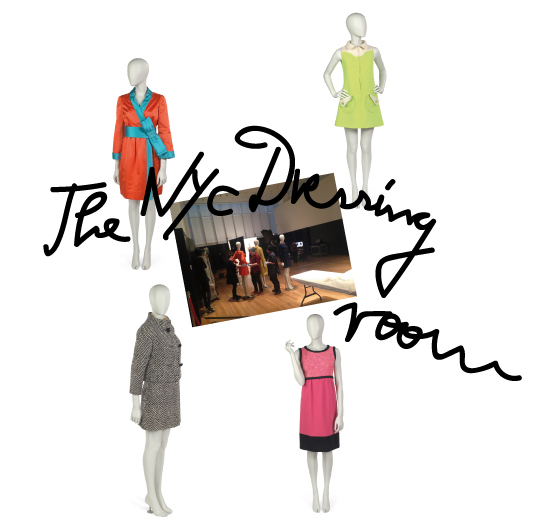
Fashion Week may be over, but New York still has plenty to offer to the fashionista. One ist a must-see exhibition at The Museum of the City of New York. “Dressing Room: Archiving Fashion” (through Mach 25) offers a rare behind-the-scenes look at the museum’s mid-20th century women’s costume collection in a pop-up studio on the museum’s first floor. The exhibition features trendsetting outfits like cocktail dresses, evening gowns and jumpsuits from the 1940s to the 1960s that were worn by notable New York women and created by celebrated designers, such as a Halston mink-trimmed evening gown and mask worn by Candice Bergen to Truman Capote’s 1966 Black and White Ball at the Plaza Hotel. IRMA’s New York guest editor Zoe Warncke spoke with costume curator Phyllis Magidson about the exhibition.
IRMA: What is the best part about working on this project?
Phyllis Magidson: Being provided with the opportunity and the privilege of becoming intimate with these extraordinary garments, meaning that we can get into the mindset of the designer as well as the original wearer and you get a feeling for the time period. Especially with the 60s, it’s a very complex decade and it depends where you get on the bus. In the beginning, you see formality in wonderful garments by St. Laurent for Dior as well as some pieces that were a little bit more experimental. By mid to late decade you experience a newfound freedom with design, color, and length.
IRMA: How does fashion, and the styles on display in Dressing Room in particular, communicate with the world?
These fashions still communicate with the world of today by providing really the groundwork for much of what is being shown today by our current hierarchy of designers. These fashions provide today’s designers with inspiration ranging from line and cut to fabric patterns and unexpected details such as Mary Quant’s innovative miniskirt and matching “knickers” that were only seen by the wearer – Dressing Room is full of little unexpected touches and details.
IRMA: What trends in Dressing Room are still popular, which are obsolete?
I don’t think any are obsolete, some represent classic silhouettes, whereas others represent experimental directions in design and materials. These fashions still provide inspiration for designers today.
IRMA: How would Dressing Room change how people think about fashion?
Dressing Room exposes the visitor to the complex process of preparing garments for exhibition, including building bodies (mannequins) that optimally exhibit the merits of the clothing.
IRMA: As Curator of Costumes, do you have any tips how I can better organize my own wardrobe?
You may want to group garments based on their ability to interact with one another, for example compatible colors and prints.

